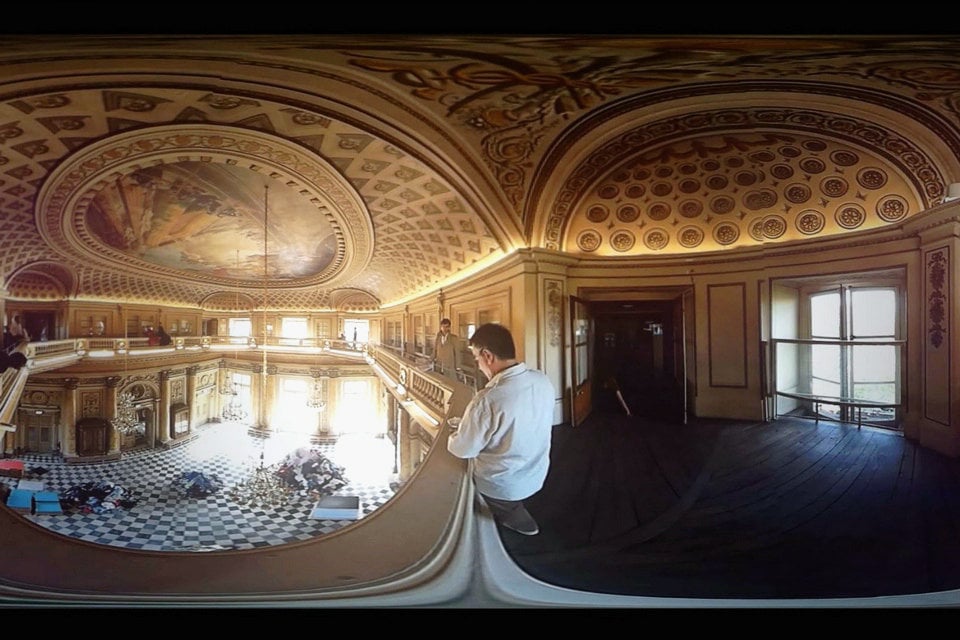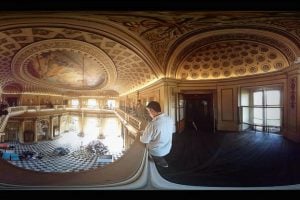Take Me (I’m Yours), curated by Christian Boltanski, Hans Ulrich Obrist and Chiara Parisi
After having become, for its reopening in October 2014, Paul McCarthy’s Chocolate Factory, then Marcel Broodthaers’s Museum of Modern Art – Department of Eagles, Monnaie de Paris invites visitors once again to rediscover its spaces thanks to an uncommon art project: Take Me (I’m Yours) transforms its 18th-century galleries into a venue of free and creative exchange, designed to overturn the conventional relationship between art and the public.
Twenty-one years after its huge success at the Serpentine Gallery, the exhibition conceived by Christian Boltanski and Hans Ulrich Obrist, Take Me (I’m Yours), is recreated. Visitors are invited, even encouraged, to touch, use, and take away objects and ideas from the show.
The exhibition curators, Christian Boltanski and Hans Ulrich Obrist, have revisited this founding principle and renewed it. Chiara Parisi, the director of the Monnaie de Paris cultural programs, has joined them on this occasion to offer a fresh perspective on the show. With more than thirty projects, the Paris exhibition is greater in magnitude and scope. The initial project has been revisited by the artists who took part in the first version (Maria Eichhorn, Hans-Peter Feldmann, Jef Geys, Gilbert & George, Douglas Gordon, Christine Hill, Carsten Höller, Fabrice Hyber, Lawrence Weiner, Franz West), with new collaborations (Etel Adnan & Simone Fattal, Paweł Althamer, Kerstin Brätsch & Sarah Ortmeyer, James Lee Byars, Heman Chong, Jeremy Deller, Andrea Fraser, Gloria Friedmann, Felix Gaudlitz & Alexander Nussbaumer, Jonathan Horowitz, Koo Jeong-A, Alison Knowles, Bertrand Lavier, Charlie Malgat, Angelika Markul, Gustav Metzger, Otobong Nkanga, Roman Ondak, Yoko Ono, Philippe Parreno, point d’ironie (agnès b.), Sean Raspet, Ho Rui An, Takako Saito, Daniel Spoerri, Wolfgang Tillmans, Rirkrit Tiravanija, Amalia Ulman, Franco Vaccari, Danh Vo).
Displayed on the walls of the last factory in the centre of Paris, the exhibition is an invitation to revisit the myth of the singularity of an artwork and question its modes of production. Like coins, works of art are destined to be disseminated. This exhibition, designed as a place for interaction between visitors and artists, is characterised by its open form which evolves in time. When it ends, the pieces will disappear, having been distributed in their entirety. Challenging conventional economic channels, Take Me (I’m Yours) presents a model based on exchange and sharing, and thus raises questions about the exchange value of art, an issue intimately linked to Monnaie de Paris.
With each day that passes, it is the show’s visitors who will transform it. The exhibition extends beyond the rooms dedicated to it: artists will use the Google app to offer a virtual tour combining the exhibition’s past at the Serpentine in London in 1995, its present at the Monnaie de Paris in 2015, and its future – with forthcoming versions destined to travel further afield. It also makes its presence felt at the stand of a Parisian bouquiniste – a second-hand bookseller opposite Monnaie de Paris – and gets a breath of fresh air every day through the actions of the artists who surprise visitors during impromptu artistic interventions, during the exhibition and more intensly during FIAC from 22 to 24 October.
From the 16th September, alongside these events, the writer Federico Nicolao postes a daily report on the exhibition on Instagram (#kikerikidide).
The Take me (I’m Yours) exhibition has been created in association with Eva Albarran and Three Steps to Heaven. It is supported by agnès b., Briochine, Ecotextile, Givaudan, Google Cultural Institute, Kolor GoPro, 89plus, Photomaton®, Presstalis and Sony mobile.
The Exhibition
Twenty years after its success at London’s Serpentine Gallery the exhibition “Take Me (I’m Yours)” – curated by Christian Boltanski and Hans Ulrich Obrist, now joined by Chiara Parisi – has been recreated at Monnaie de Paris in a new spirit of freedom. The show invites visitors to become either a participant, a buyer, a co-author of the artwork or even its creator. Artists generously offer and give away objects and artworks throughout the exhibition’s space. Starting at the entrance of the Monnaie de Paris’ building, Fabrice Hyber, Yoko Ono, Kerstin Bratsch & Sarah Ortmeyer present their projects to the public.
Wish Tree
The main entrance is framed by two olive trees.These Wish Trees from Yoko Ono do not yield olives whereas visitors are invited to hang their wishes on a label to the branches of the trees. The public becomes the driving force of a collective impetus by hanging its hopes on this symbol of peace.
Monster (Koko Edition)
With MONSTER (KOKO edition), Kerstin Brätsch & Sarah Ortmeyer collaborated to create an environment combining nature and artificiality. The eggs displayed in the staircase by Kerstin Brätsch seem to have fallen from tall palm trees designed by Sarah Ortmeyer. The visitor is invited to make his or her way through this offbeat setting and pick up fruits like an Easter egg hunt. Picking up these eggs reminds the first gesture of men and women who fed themselves with what nature provides.
Divan
Visitor’s body is put to the test with artworks and installations to try out. Physical experimentation takes over the traditional behavior one can have when visiting a museum. Divan from Franz West is both a place to rest for the visitors who just climbed up the stairs of Monnaie de Paris and a sculpture to look at. You now have the choice to interact or not with the artwork.
Take Me (I’m Yours)
Between the two Divan pieces, artist Douglas Gordon invites visitors to participate in a raffle. The prize, winning an intimate dinner with the artist himself, turns art into a social event.
Sans titre
In the ticket office, art is also present as a matter for discussion and exchange. Paweł Althamer sets up a trading bank where the audience sits down with a performer and creates its own virtual currency. This one becomes very real when the performer validates it with a buffer and thus allows the visitor to trade it against a workshop, a visit or an event at the Monnaie de Paris and other art institutions.
Untitled (Eau de RRose of Damascus)
Before entering into Salon Dupré, artist Rirkrit Tiravanija sets up an environment that invites to sharing with each other. People can gather around a 14th century still from Syria that produces rose water. Every each visitor can take a vial of this perfume and also eat a rose-scented Host.The title of the work, Untitled (Eau de RRose of Damascus), is a reference to both the primary function of the still as well as its particular shape that recalls the Bottle Rack from Marcel Duchamp. RRose also refers to the creation in 1921 of a perfume called Eau de voilette Belle haleine by Duchamp’s alter ego RRose Sélavy in collaboration with Man Ray.
Dispersion
Inside Salon Dupré, people make their way through Christian Boltanski’s piles of clothing and Félix González-Torres’ stacks of posters. Boltanski’s work is titled Dispersion (Dispersal). According to the artist, these pieces of clothing are the equivalent of a photographic portrait or a corpse in the way they represent the absence of someone. By taking away one of these pieces, public gives life back to the clothing.
Untitled
Visitors have to pick up one of Felix González-Torres’ posters from the stacks to activate the work of art. This process turns each stack into a “huge public sculpture” because of their scattering and permanent circulation. This work of art is made public mainly because it has the power to belong to everyone by taking advantage of its reproducibility. Another work of Félix González-Torres, Untitled (Revenge) is a bunch of blue candies displayed on the ground of an exhibition room. The weight of this pile represents the one of Felix González-Torres and his partner, Ross, who both died from AIDS. The erosion of the candy pile echoes the slow consummation of the couple bodies by the disease.
The Banners
Even though the title of this piece could refer to an advertisment, the texts written on the banners are more related to protest slogans rather than publicity. The public can take these slogans away on badges which are available in a stand tray. Gilbert & George thus transform the visitor’s body into an artistic device. The artworks carried by the public contribute to the achievement of one of the main ideas of this English duo: “art for all”.
Swap
A performer behind a table, like a vendor, provides an object. When the first visitor enters the room, the performer tries to exchange this object for any object belonging to the visitor and which he or she is willing to swap. A collective bargaining is then set up about the value of exchange. Roman Ondák produces works that echo the exhibition space and place the visitor at the centre of the creative process. He creates a situation in which the visitor is involved and actuates the work, which “develops” throughout the exhibition.
L’Os du bonheur
In Poland, where the artist was born, witch doctors used this wishbone to heal illnesses, whereas sorcerers used them to cast spells on men so women could marry them. The artist applies the concept of mechanical chain production to an artwork. In this way, she overturns traditional commercial channels. This work is an encounter between the irrational world of superstitions which nourishes the artist’s work, and the rational world of advanced technologies, which the 3D printer represents.
Esposizione in tempo reale n.43: Lascia su queste pareti una traccia fotografica del tuo passaggio
Franco Vaccari is the first artist to install a working photo booth in an exhibition space and make it available to the public. The artist’s work encourages visitors to take a picture of them and pin it up to the walls of the gallery. Visitor’s work is split between a co-creation and a souvenir from his or her participation to the exhibition. Franco Vaccari uses photography as a proof of a physical presence of the individual.
Monnaie de Paris
Founded in 864, Monnaie de Paris is France’s longest standing institution and the oldest enterprise in the world. It fulfils the public service mission of striking the euro coins in circulation for France, as well as coins for other foreign currencies. For twelve centuries, it has cultivated a venerable tradition of metalworking arts and crafts. It was Paris first industrial establishment and is the last in operation today. Artistic pieces are still produced at its historic Quai de Conti manufacture.
Attached to the French ministry for the economy, finances and industry since 1796, Monnaie de Paris became an Etablissement public industriel et commercial (EPIC, an official designation for state-funded industrial and commercial institutions) in January 2007.



